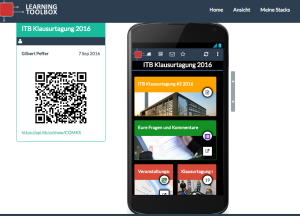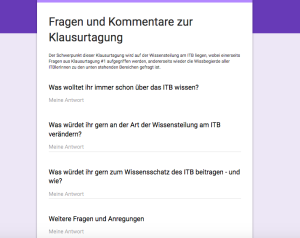Bringing Learning Toolbox to users – Part Two: Workshop with craft trade companies in Bremen
In my previous post I started a series of reports on the newest events in the fieldwork of our EU-funded Learning Layers (LL) project and its key product Learning Toolbox (LTB) developed in the construction sector pilot. The LTB has been shaped together with our application partners in the North-German construction industries and trad to support workplace learning and/or learning in the context of work processes. With the two workshops that we organised on Wednesday (7.9.) and Thursday (8.9.) we wanted to present the Toolbox and to bring it close to users. The previous post covered the workshop with researchers from our institute – Institut Technik & Bildung (ITB). This second post focuses on the workshop that we had with representatives of craft trade companies and construction sector professionals from Bremen region.
Introducing the Learning Layers project and the Learning Toolbox
In this workshop the moderator Werner Müller (ITB) and the representative of the developers of the Toolbox Gilbert Peffer (CIMNE) focused on the efferts of the project to support learning and knowledge sharing in the context of work and organisations. In particular Gilbert demonstrated the use of the Toolbox with different examples on practice-based learning and on getting access to relevant information and deeper know-how in work situations. See Gilbert’s slides here LTB-WS_Handwerksbetriebe.
The case for using Learning Toolbox at a construction site presented by Thomas Isselhard
After the introductions our application partner Thomas Isselhard from the network for ecological construction work (Netzwerk Nachhaltiges Bauen – NNB) presented the case with which he had trained himself to become an active user of the Learning Toolbox. Thomas is an architect with expertise on renovating old buildings and work with ecologically sound construction materials. He is now in charge of a special construction site in Verden. The old building that is under preservation order (Denkmalschutz) needs to be renovated thoroughly. However, due to the preservation order there are further requirements how the work needs to be done. And therefore, there are frequent changes in plans and instructions – and repeated needs for real-time communication between and advice for the teams that are working on the site. In the following video clip Thomas and Werner discuss this issue when visiting the construction site:
Concerning the introduction of the Toolbox in their working Thomas refers to their standard procedures, files and use of colours in paper-based archiving. It has been convenient for his fellow colleagues and collaborators to use the similar structure in creating digital tiles in the Toolbox (for specific phases and documents) and to equip them with the colours that have been used in paper-based archiving. Therefore, he has a general prototype stack (of such tiles) that he can copy for new cases with which he will use the Toolbox. In the following video clip Thomas expresses this in his own words:
Thomas gave us several examples from everyday life situations, how much miscommunication and unnecessary delays (due to waiting times) can be avoided if different parties involved were equipped with such a Toolbox and had the updated information (without confusion on versions) at the same time available.
Discussion on other prospects or working issues to be considered
In the discussion several issues were raised from the perspective of the companies. In the beginning some participants were concerned, whether construction workers are ready to use digital tools and insert information in writing. Thomas stated immediately that the Toolbox is very easy to use and that users can adjust it to their needs without heavy training. Others emphasised that there are several ‘paperwork’ duties that can be immensely facilitated with such an interactive tool. Furthermore, the Toolbox makes it easier to manage different communication channels and versions of documents that are being used. Also, the Toolbox makes it easier to distinguish between archives and working documents – and to make this distinction transparent to all parties. Yet, for regular use, the participants needed clarification on storage of data (cloud – central server – local server), on different levels of privacy and sharing, on access to public resources (official maps held by public authorities) and on the policies and pricing for subscriptions. These, as we see it, will be clarified by the end of the LL project, when the support of the Toolbox is continued by a new service provider.
– – –
I think this is enough of this workshop. We got a clear impression that the Toolbox is reaching the stage of maturity and that the craft trade companies are ready for further talks on actual use of it in their work. However, given the relatively short time of piloting, we all understand that there is a need for further support by research & development activities. From this perspective we in ITB are pleased to note that we have several follow-up projects that can provide such support. Therefore, we will keep working with such follow-up activities.
More blogs to come …


